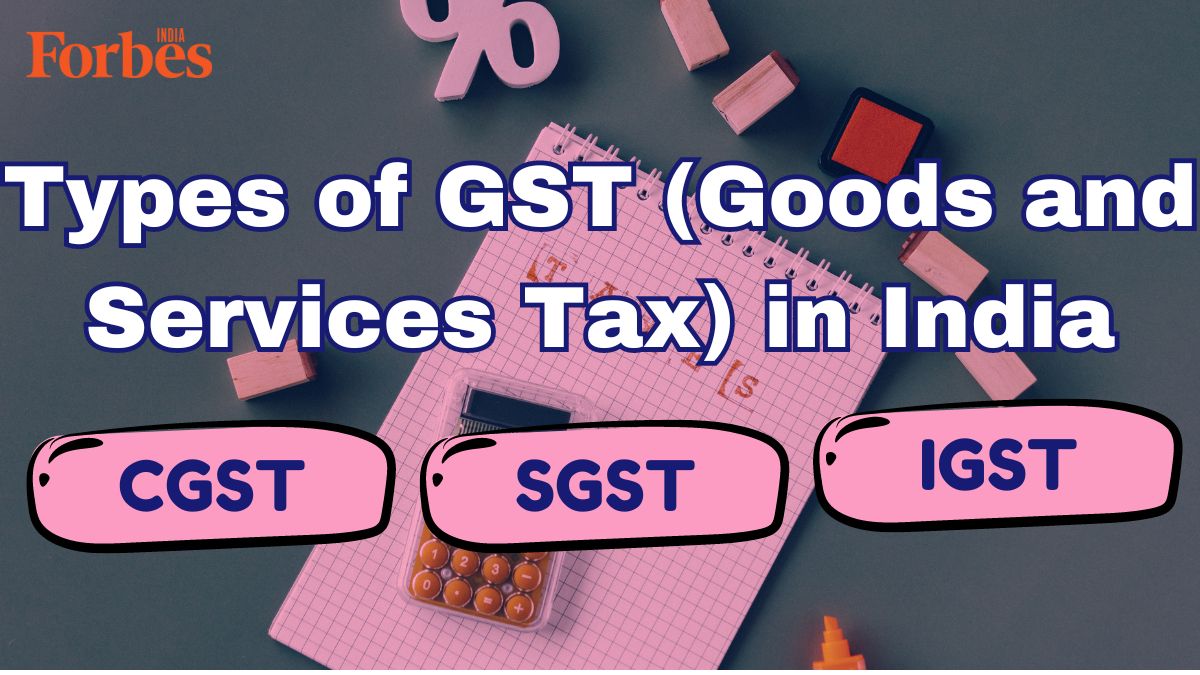
Before the several types of GST (Goods and Services Tax), India’s tax landscape was a labyrinth of various taxes, complicating matters for businesses and the government alike. GST emerged as a solution to streamline this chaos, aiming to simplify processes and enhance tax compliance. And it’s fair to say GST has been a success story for India. Despite initial challenges, it has facilitated smoother tax operations, minimised tax evasion, and facilitated ease of doing business in India by reducing the problem of “tax on tax”. GST has contributed to the country’s economic growth and fiscal stability. In this blog, we will look at the different types of GST taxes and check out who bears the brunt of this tax. Let’s start with the big question: What is GST?
What is GST?
GST is a comprehensive indirect tax levied on the supply of goods & services across India. It’s a unified indirect tax system that aims to replace the previous maze of taxes like excise duty, VAT, and service tax.
With GST, the idea is to simplify the tax structure, making it more transparent and efficient for both businesses and consumers. Essentially, it ensures that the tax burden is spread more evenly across various stages of production and distribution. It’s a significant reform that aims to streamline taxation, promote economic growth, and enhance compliance.Here are the objectives of the types of GST:
- GST aims to simplify the tax structure by amalgamating various indirect taxes, such as excise duty, service tax, and VAT into a single unified tax, making compliance easier for businesses.
- The implementation of GST aims to bring transparency to the taxation system by eliminating hidden taxes and ensuring a more straightforward tax regime.
- GST seeks to establish uniform tax rates across the country, promoting consistency in tax administration and reducing tax-related barriers to interstate trade.
- GST intends to curb tax evasion through its robust invoicing and input tax credit mechanism, ensuring that taxes are paid at each stage of the supply chain.
- By rationalising the tax structure, reducing the overall tax burden, and minimising cascading effects, GST aims to promote economic growth, encourage investment, and enhance the ease of doing business in India.
Also Read: How to get the GST number?
Taxes replaced by GST
Here is the list of taxes replaced by GST:
- Central Excise Duty
- Service Tax
- Value Added Tax (VAT)
- Central Sales Tax (CST)
- Special Additional Duty of Customs (SAD)
- Octroi
- Countervailing Duty (CVD)
- Entry Tax
- Purchase Tax
- Luxury Tax
- Entertainment Tax
- Taxes on lotteries, betting, and gambling
- State cesses and surcharges
What are components of GST? Types of GST tax
Here are the different types of Goods and Services tax:
SGST
SGST or State Goods and Services Tax is a component of GST levied by the state government on intra-state supply of goods & services. It is collected and administered by the state where the supply takes place.SGST helps states maintain fiscal autonomy and generate revenue from transactions within their borders, contributing to their development and welfare initiatives.
CGST
CGST or Central Goods and Services tax is another GST type which is levied by the central government on intra-state supply of goods & services in India. It is collected and managed by the central tax authorities. CGST ensures that the central government has a share of revenue from transactions within the country, providing funds for national programs, infrastructure development, and other central initiatives.
IGST
IGST is a GST-type tax imposed by central government on the inter-state supply of goods & services in India. It is collected by the central government but is distributed between the centre and the destination state. This component of GST aims to streamline the taxation of interstate transactions, ensuring that tax revenues are appropriately allocated between the origin and destination states while reducing compliance burdens for businesses involved in interstate trade.
Who is liable to pay GST?
Under the GST regime in India, the liability to pay GST typically falls on the supplier of goods or services. In most cases, businesses registered under GST, known as registered taxpayers, are required to collect GST from their customers on the supply of goods or services and remit it to the government. However, there are certain cases where the liability to pay GST may shift to the recipient of goods or services, such as in the case of reverse charge mechanism for specified goods and services.
Additionally, non-resident taxpayers supplying goods or services in India are also liable to pay GST. It’s important for businesses to understand their GST obligations and comply with the relevant regulations to avoid penalties or legal consequences.
Frequently asked questions (FAQs)
When was GST introduced in India?
GST was introduced on July 1, 2017. One Hundred and First Amendment, 2016 facilitated its introduction. This amendment enabled the implementation of GST by granting concurrent powers to both the central and state governments to levy and collect GST.What is the full form of GST?
The full form of GST is Goods and Services Tax. It’s a comprehensive indirect tax levied on the supply of goods and services across India, aiming to streamline the taxation system by replacing various indirect taxes levied by the central and state governments.
